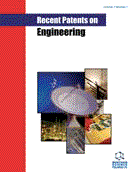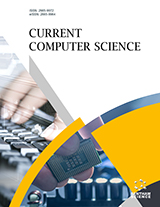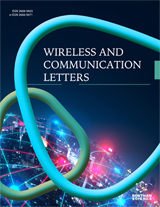Abstract
Aims: We consider the Direction of Arrival (DOA) estimation for code division multiple access (CDMA) signals. Background: Solving this problem requires non-linear optimization and thus the speed of convergence becomes crucial.
Objective: A novel Modified Artificial Bee Colony (MABC) has been proposed. We use secondorder Taylor series expansion of the cost function to ameliorate the searchability of artificial bee colony (ABC) for finding the globally optimal solution.
Methods: The main idea is to harness the exploration and exploitation features. The optimum point of second-order Taylor expansion of cost function is used as a velocity factor of the ABC algorithm.
Results: The proposed technique is used for solving the DOA estimation problem of a CDMA system. Simulation results confirm the performance improvement of our proposed algorithm.
Conclusion: The cost function of the DOA estimation usually leads to a non-linear optimization problem. Using evolutionary algorithms can improve convergence rate of such problems.
Keywords: Artificial bee colony, direction of arrival estimation, code division multiple access, second-order taylor series, MABC, DOA.
Graphical Abstract
International Journal of Sensors, Wireless Communications and Control
Title:A Novel Modified Artificial Bee Colony for DOA Estimation
Volume: 11 Issue: 1
Author(s): Seyed Ahmadreza Hashemi Parsa, Ataolah Ebrahim Zadeh and Seyed Javad Kazemitabar*
Affiliation:
- Faculty of Electrical and Computer Engineering, Babol Noshirvani University of Technology, Babol,Iran
Keywords: Artificial bee colony, direction of arrival estimation, code division multiple access, second-order taylor series, MABC, DOA.
Abstract:
Aims: We consider the Direction of Arrival (DOA) estimation for code division multiple access (CDMA) signals. Background: Solving this problem requires non-linear optimization and thus the speed of convergence becomes crucial.
Objective: A novel Modified Artificial Bee Colony (MABC) has been proposed. We use secondorder Taylor series expansion of the cost function to ameliorate the searchability of artificial bee colony (ABC) for finding the globally optimal solution.
Methods: The main idea is to harness the exploration and exploitation features. The optimum point of second-order Taylor expansion of cost function is used as a velocity factor of the ABC algorithm.
Results: The proposed technique is used for solving the DOA estimation problem of a CDMA system. Simulation results confirm the performance improvement of our proposed algorithm.
Conclusion: The cost function of the DOA estimation usually leads to a non-linear optimization problem. Using evolutionary algorithms can improve convergence rate of such problems.
Export Options
About this article
Cite this article as:
Parsa Ahmadreza Hashemi Seyed , Zadeh Ebrahim Ataolah and Kazemitabar Javad Seyed *, A Novel Modified Artificial Bee Colony for DOA Estimation, International Journal of Sensors, Wireless Communications and Control 2021; 11 (1) . https://dx.doi.org/10.2174/2210327909666191209154508
| DOI https://dx.doi.org/10.2174/2210327909666191209154508 |
Print ISSN 2210-3279 |
| Publisher Name Bentham Science Publisher |
Online ISSN 2210-3287 |
 3
3
- Author Guidelines
- Bentham Author Support Services (BASS)
- Graphical Abstracts
- Fabricating and Stating False Information
- Research Misconduct
- Post Publication Discussions and Corrections
- Publishing Ethics and Rectitude
- Increase Visibility of Your Article
- Archiving Policies
- Peer Review Workflow
- Order Your Article Before Print
- Promote Your Article
- Manuscript Transfer Facility
- Editorial Policies
- Allegations from Whistleblowers
- Announcements






















